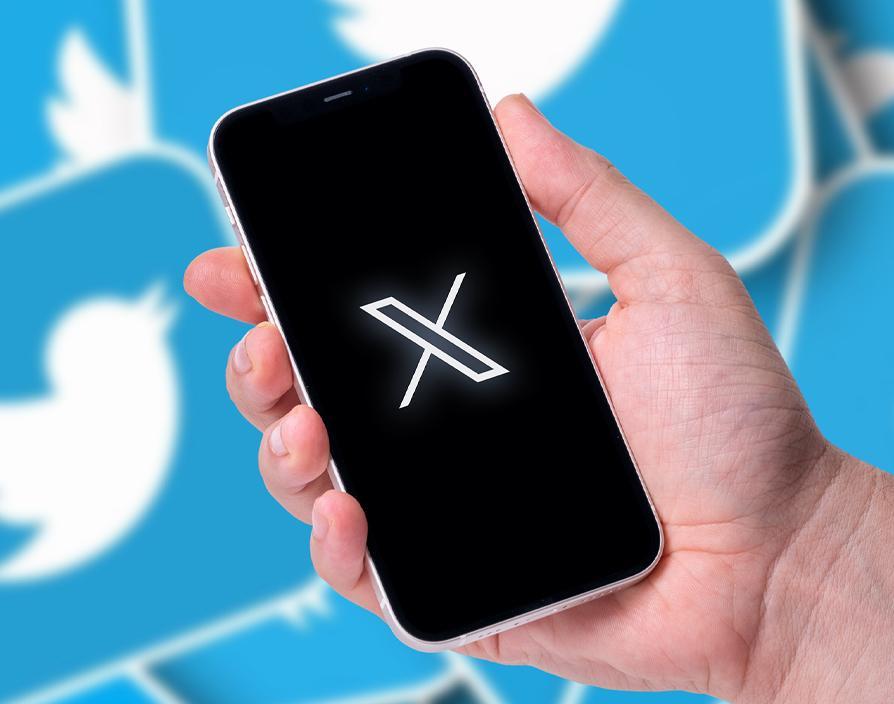x.com now redirects to twitter.com, the Twitter sign has been removed from their San Francisco headquarters and the icon has been changed on all mobile devices.
According to a sentiment analysis of articles on the change, the majority of the public are treating the rebrand with ridicule. So is the rebrand the right move for the social media company?
Rebranding any business comes with risks but a major brand like Twitter will face more issues. We’ve seen a couple of brands attempt a big change recently, such as Hermes rebranding to Evri and Facebook’s new parent company Meta.
While Evri has embedded itself fairly well with consumers, Meta made the choice to keep Facebook as a brand and develop Meta above it, meaning the recognition Facebook had built up was retained within the family of brands.
There are times when rebranding is the right choice for a business but the process needs to be carried out with care and consideration to ensure disruption is kept to a minimum.
The why and when of rebranding
Rebranding can bring disruption if you have an existing customer base. Twitter is a good example of how losing brand recognition can affect how people interact with your business. With Twitter and associated words like “tweet” so ingrained in our experience with the business, a drastic change can prevent the new brand from embedding.
However, if you’re changing your business distinctly, a well-thought-out rebrand can be just what you need. For example, if you’ve realised that you need to take your services in a different direction, or if you’ve decided to target a new customer base, aligning your brand to suit the needs of your new customers is essential to create a strong foundation.
You may also choose to rebrand to present a more professional appearance or if your business is expanding. In these instances, you will want to retain your existing customers and demonstrate the benefits of your rebrand to them.
During any rebrand, communication is key. When you’re changing your business or service, let your existing customers know so that they’re not disappointed when they no longer get the same experience from your brand that they’re expecting.
If you’re rebranding but still want to keep your customers, you may want to invite people who have previously interacted with your brand to do so again with a sale or discounts to reinforce their positive relationship with your brand and to embed in their minds the positive actions of your new persona.
The value of a brand audit and establishing your brand’s identity
Where Musk’s rebrand to X may struggle is in the sheer power of Twitter’s existing brand identity. With the app continuing to do the same job as Twitter, they may find it hard to shed the previous language around “tweets” which is so embedded in users’ minds.
However, X CEO, Linda Yaccarino, has also claimed that the rebrand is the first step towards becoming an “everything” app. This suggests that the reason behind the rebrand is to reposition the business as more than a social media platform.
This is similar to Meta’s attempt to rebrand around the Metaverse. But unlike Meta, X has removed all recognisable Twitter branding, jeopardising their relationship with their existing customers. Meta’s decision to keep Facebook and rebrand its parent company has helped keep continuity while the new brand name is embedded.
Conducting a brand audit encompassing all your external marketing materials and your social media presence will help you understand how you’re communicating with your audience and how they are discussing your brand online.
This may be part of the reason for the change to X as they attempt to distance themselves from the negative reception of some of the app’s new features. However, with the app retaining these features, they risk losing out on the good faith Twitter has built up with its users over years.
Conducting a brand audit is the perfect time to identify issues with how your business is perceived and work to fix them with your new messaging. This could take the form of satisfying the needs of your existing customers or emphasising how your service is supposed to work for your target customers.
How to communicate the change
When rebranding, communication with all stakeholders is key. This includes your employees as well as your customers – if your team doesn’t understand where you’re going, they’re not going to be able to communicate it to customers and your messaging is going to be inconsistent.
Helping your team understand why you’re rebranding, what that means for them and what that means for customers is essential to create a united presence during a period of inconsistency.
When addressing your customers, overcommunication is an effective way of ensuring your new message is conveyed. Let your customers know your plans before you start the transition, inform them of how this affects their service and be transparent about what they can expect from you in the future.
Once you’ve made the transition, communicating with your customers is vital. Make sure you welcome them to your new brand, get them involved in the transition and give them as much information as possible about how your business has changed. This is an opportunity to emphasise your culture and keep people invested in working with you.
Learn from your research about what people expect from your brand, as well as what potential new customers are looking for and be clear about how you will deliver on this in your marketing.
During your brand audit, you should also analyse what channels your business comes from. This will help you understand where to position your message so your customers are most likely to see it. If you’re aiming to diversify your business channels, you might want to introduce some of your messaging through new channels. However, during such a period of disruption, it’s important to spend your money wisely and keep most of your marketing for channels you’re used to that can maintain some continuity of business.
Listening to feedback and criticisms
Data we’ve collected shows that, based on nearly 600,000 engagements on over 4,000 articles about X’s rebrand, 82% of reactions on social media were “laugh” reacts, compared to just 10% “love” reacts.
We also analysed the sentiment of headlines around the rebrand, reviewing over 900 articles. While 50% of headlines were neutral, 30% received a negative and 20% received a positive sentiment.
This shows that both the public and the media are more negative-leaning on Twitter’s rebrand, which could be influenced by the wider story around Elon Musk’s time at Twitter, which has included numerous questionable feature rollouts like post limits, the new check mark system and issues around API access.
The lesson to be learned from X’s transition is that businesses need to be aware of how they are perceived and work hard to ensure they correct negative perceptions of their brand, particularly during major periods of disruption. This can be done through marketing, press communication and social media.
A rebrand is a time for clarity of your business offering and every step needs to be taken carefully and with consideration. Whether you serve millions or hundreds of customers, it’s the people that make your business so bringing them along for the journey is essential for a successful business transition.
Share via:









































